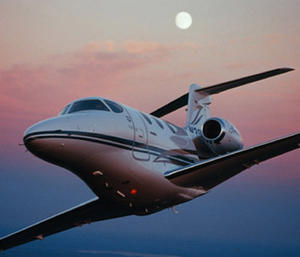Debate intensifies over private planes security measures
There are 220,000 private planes operated in the United States, flying out of 19,000 airports, most of them small, community airports; in 2008 the Transportation Security Administration (TSA) proposed tougher security regulation of 15,000 of these planes — mostly private jets — which fly out of 4,700 airports; facing stiff resistance from owners and operators of these planes, TSA two weeks ago announced it would relax the proposed security requirements; last week’s suicide attack on a Texas office building causes TSA to reconsider the whole issue

TSA considers tighter restrictions on private aircraft // Source: 1st-jet.co.uk
In late 2008 the Transportation Security Administration (TSA)made a stunning and little-noticed projection: If a private jet flew into an urban office building, 3,000 people could be killed. This is a higher death total than in the 9/11 attacks.
The TSA used the estimate to justify a plan to impose security rules on 15,000 private jets flying our of 4,700 airports. These checks were to include requirements that jet operators check passengers against watch lists and keep weapons off their planes. Note that the proposed TSA measures would have applied to a fraction of the 220,000 or so small and medium-size aircraft operated in the United States; these planes use 19,000 airports, most of them small (see “TSA to Expand Regulation of Private Aviation,” 12 August 2008 HSNW; and “TSA to Require Background Checks of Private Jets’ Passengers,” 14 October 2008 HSNW).
Owners and operators of private planes did not like the idea. USAToday’s Thomas Frank writes that more than 7,000 protest letters from private pilots, businesses, and aviation groups forced the TSA to rewrite its plan. A new proposal is likely late this year, and security rules could take effect in 2011 — a decade after the 9/11 attacks (“TSA’s Proposal for Tougher General-Aviation Security to be Scaled Back,” 9 February 2010 HSNW).
Frank notes that the TSA’s effort to regulate private jets reflects the deep dispute over how much of a threat the U.S. security small planes pose. DHS itself is divided over this question (“DHS IG: General Aviation Is But Limited Security Threat,” 22 June 2009 HSNW).
The vast majority of private planes are small, piston-engine aircraft individuals fly out of community airports primarily for recreation and instruction. DHS regards these planes too small, light, and slow to cause major damage, although it does restrict those planes from flying above high-profile events such as the Olympics, the Super Bowl and national political conventions. There are security experts, though, who warn that these small planes could be used by terrorists in a manner similar to the way crop-dusters are used: they could be fit with nozzles to spread chemical poisons or aerosolized biological agents over a large area.
Following last week’s suicide attack by tax-protester Joseph Stack, TSA is reconsidering the issue. Stack deliberately flew his four-seat, piston-engine plane into an Austin, Texas office building last week, killing himself and a worker in the building, which suffered extensive damage).
Frank writes that the TSA plans to review the damage to determine whether it should consider new security measures.
Douglas Laird, another security expert, agreed. “You can do about as much damage with that plane as you could with an SUV loaded with fuel,” he said. “I can’t get agitated about it.”
The 400,000-member Aircraft Owners and Pilots Association (AOPA) agrees. “AOPA is working to ensure there are no new regulations as a result of the incident,” the organization said on its Web site.
